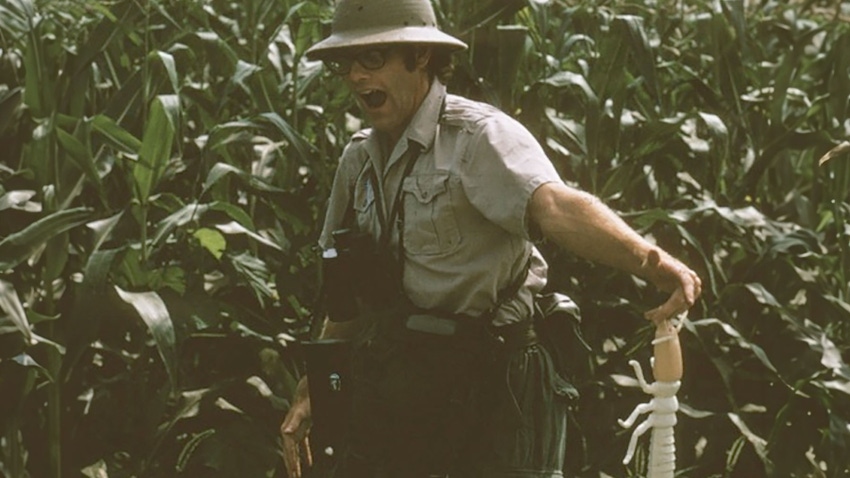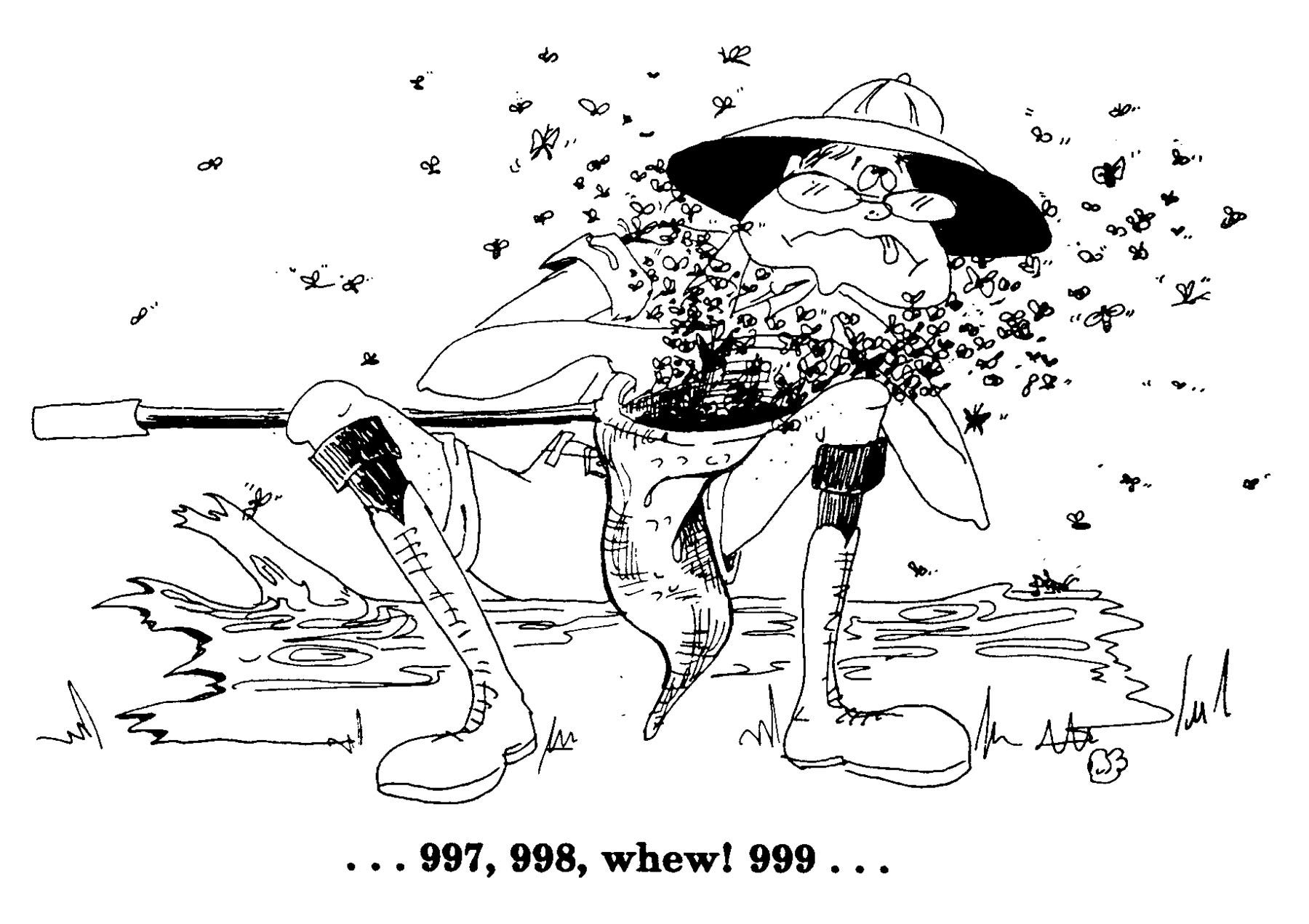
Thumb through issues of Indiana Prairie Farmer from the late 1970s and 1980s and you will find Bug Scout, a cartoon featuring a stereotypical entomologist. The goofy character and his message were popular with readers.
“There’s a human-interest story behind Bug Scout,” says Tom Turpin, retired Purdue Extension entomologist. “Pest scouting and Integrated Pest Management was used in California and for cotton, but not in the Midwest. To introduce it to farmers, we needed a hook to get them interested.”
Birth of Bug Scout
Turpin and his cohorts took pictures of crop scouting and used the slide set at winter meetings. To make it humorous, they dressed John Mumford as Bug Scout. Mumford was an undergraduate student in entomology working in the department.
“Pretty soon, we got the idea for a cartoon character,” Turpin recalls. “Another student was a good artist. John was her model for Bug Scout.”
With a cartoon and short story in hand, Turpin approached Indiana Prairie Farmer. A bit skeptical, the magazine staff agreed to try it.
“One day Tom Budd, the editor, called me,” Turpin says, chuckling. “They wanted it every month! As it turned out, the first cartoon ran in a readership study issue and was the second most-read story.”
Epilogue
After several successful years, Bug Scout took retirement. Years later, it was revived temporarily as the Best of Bug Scout.
“The artist moved West, and it became harder to keep it going,” Turpin recalls. There was no internet then.
“The concept of scouting and Integrated Pest Management still makes sense,” he insists. “Pests are different, because unless you raise non-GMO corn, corn borer isn’t a threat. But with fungicides, for example, you don’t want to sacrifice yield to disease. But why spray fungicides if there is no disease present?
“Bug Scout had it right. You don’t know what is out there if you don’t go look!”

BUG SCOUT ORIGINAL: This is one of the early Bug Scout cartoons that appeared in Indiana Prairie Farmer. (Courtesy of Tom Turpin)
Who was John Mumford?
“John went on to have a distinguished international career as an entomologist,” Turpin explains. “Whenever he accepted an award, he loved to say, ‘I got my start in entomology as a model for a cartoon character.’”
Mumford, who grew up in Australia, came to the U.S. with family and entered Purdue in 1970. After Purdue, he earned a doctorate in applied entomology at Imperial College London in 1978. Staying in England, his career took him around the world, eventually doing pest assessments and strategic planning for numerous groups, including UN agencies. He worked with the World Health Organization and even the International Atomic Energy Agency.
Mumford received the John V. Osmun Alumni Professional Award in Entomology at Purdue in 2006 and was also recognized as a Purdue Distinguished Alumni. He died in December 2022. His life was celebrated at a ceremony in Indiana in 2023.
About the Author(s)
You May Also Like




